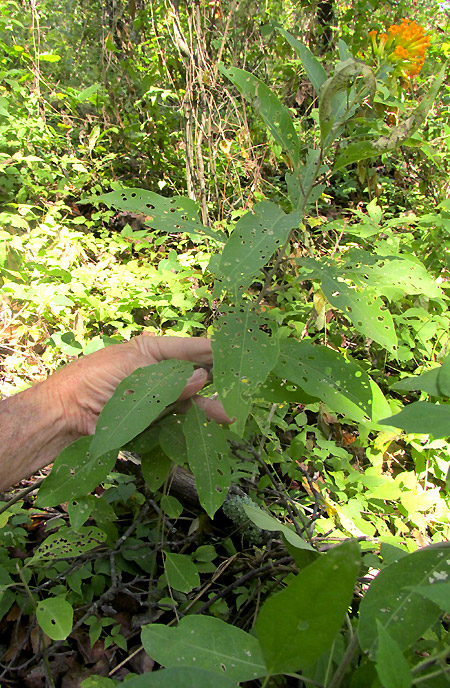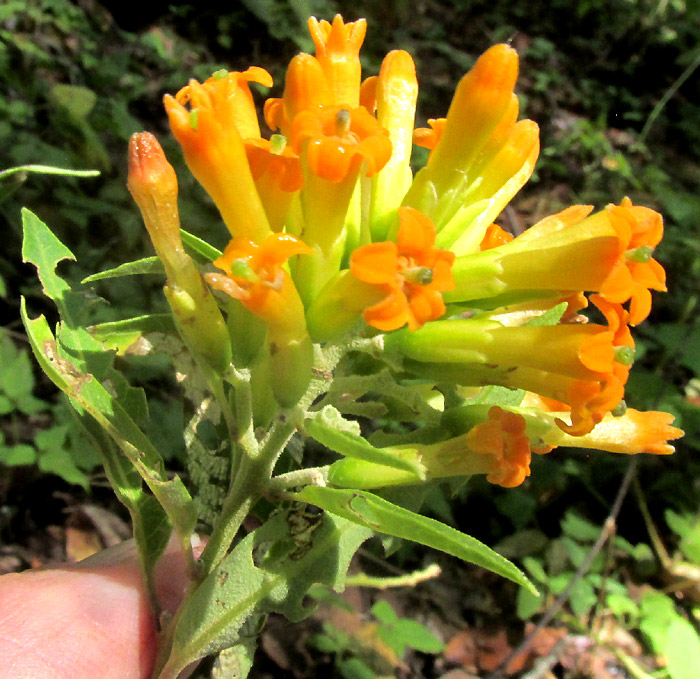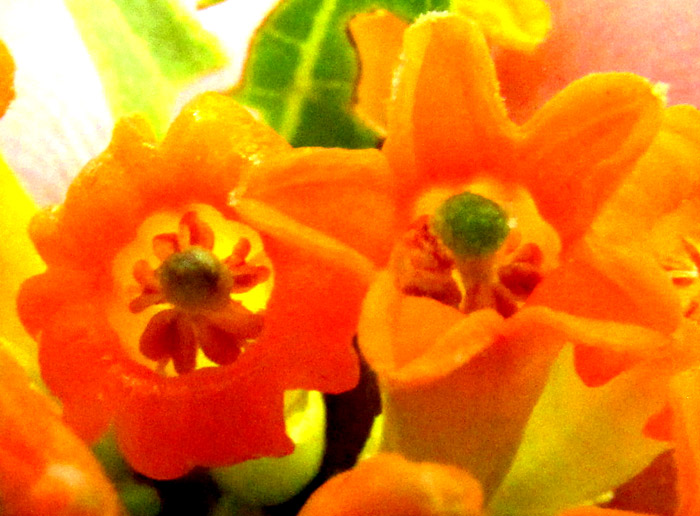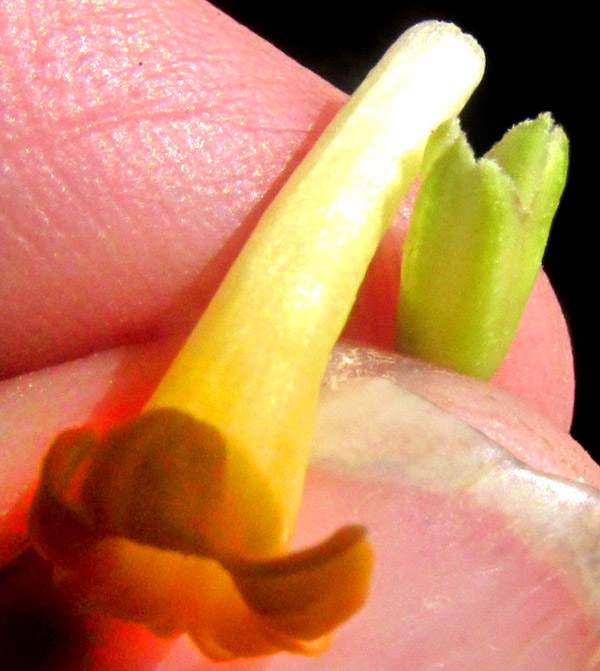Excerpts from Jim Conrad's
Naturalist Newsletter
Entry dated November 10, 2023, from notes taken from ridge with secondary oak forest about 300m west of Cascadas de La Piedad waterfall 3kms NW of the community of San Pablo, municipality of Almeaco de Bonfil; N20.1002°, W100.0067°, elevation 2360 meters (7750ft); extreme southern Querétaro state, MÉXICO
CESTRUM THYRSOIDEUM

The above semiwoody, somewhat shrubby plant grew on a partially shaded, erosional gully beneath scattered oak trees. Firewood gatherers and roving livestock had disturbed the area.

The orange-yellow corollas consisted of slender cylinders atop which five short lobes abruptly arose, curving backward as they matured.

Five pollen-producing anthers clustered at the corolla tube's opening, encircling the ovary's slender style tipped with a green, globe-shaped stigma. Already the plant's general form, leaf shape and flower arrangement and structure strongly suggested the Nightshade Family, the Solanaceae. Within that family, the plant fit the pattern of the species-rich, commonly occurring genus Cestrum, whose species in English often are called cestrums.

The various cestrum species, of which six species are documented for the upland central state of Querétaro, most conspicuously differ from one another in their corolla colors and sizes, and the ratios of corolla tube length to that of the calyx. At the right, it's seen that the corolla tube is about 2½ times the calyx length. This is an important feature because another species more likely to occur in the Eastern Sierra Madre mountains of northern Querétaro state is very similar, Cestrum oblongifolium. However, that species' corolla tubes are consistently longer than 2½ times the calyx height, plus its corolla is more purely yellow than our orangish one.
Our plant is CESTRUM THYRSOIDEUM, which the 2020 volume of the Flora del Bajío treating Cestrum species for our region describes as occupying a variety of highland forests and secondary grassy areas, and as essentially endemic just to the Trans Mexican Volcanic Belt stretching east/west across central Mexico.
However, currently Kew's Plants of the World Online database accepts a 1999 paper in which the South American species Cestrum parqui -- which often is planted in gardens and in various countries has escaped and become an invasive weed -- was lumped with our Cestrum thyrsoideum. Therefore, if you go along with Kew, our plant occurs here and there worldwide, but if you side with our Mexican specialists, it's a purely central highland Mexican plant.
The 2015 study by Miguel Ángel Bello-González and others entitled "Plantas Útiles de la Comunidad Indígena Nuevo San Juan Parangaricutiro, Michoacán, México," tells us that in Michoacán state leaves of Cestrum thyrsoideum are mashed with a stone, and the paste smeared over the lungs for pulmonary disorders; also the plant is cooked and the water used to wash feverish patients. The plant is used somehow to treat headaches, and the local indigenous people recognize that wildlife eat it. The whole plant is employed for ritual cleansing, or "limpias."
Similarly, the South American plants have a long history in traditional medicine for a variety of ailments, from treating tumors and hemorrhoids to serving as a laxative and for intermittent fever, as well as being smoked as a tobacco substitute. All these treatments aren't surprising, since the Nightshade Family is famed for the powerful, often toxic alkaloids its species possess.